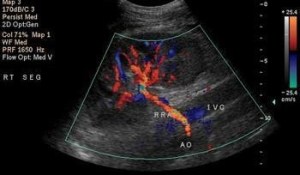Artery triplex

The arteries are normally smooth on the inside, but with age, their inner wall can become thick and uneven from deposits of materials such as cholesterol, calcium, damaged cells and fibrous tissue. These deposits form the so-called atherosclerotic plaque, which is something similar to the "cigar" of water pipes. This is called atherosclerosis. The arteries carry oxygenated blood and nutrients from the heart to the rest of the body.
When enough plaque accumulates to such an extent that it reduces the flow of blood and oxygen down the limbs, that is, when the arteries that supply them with blood become narrow or blocked, the condition is called peripheral occlusive artery disease (PAD) or peripheral vascular disease. (PAN).






